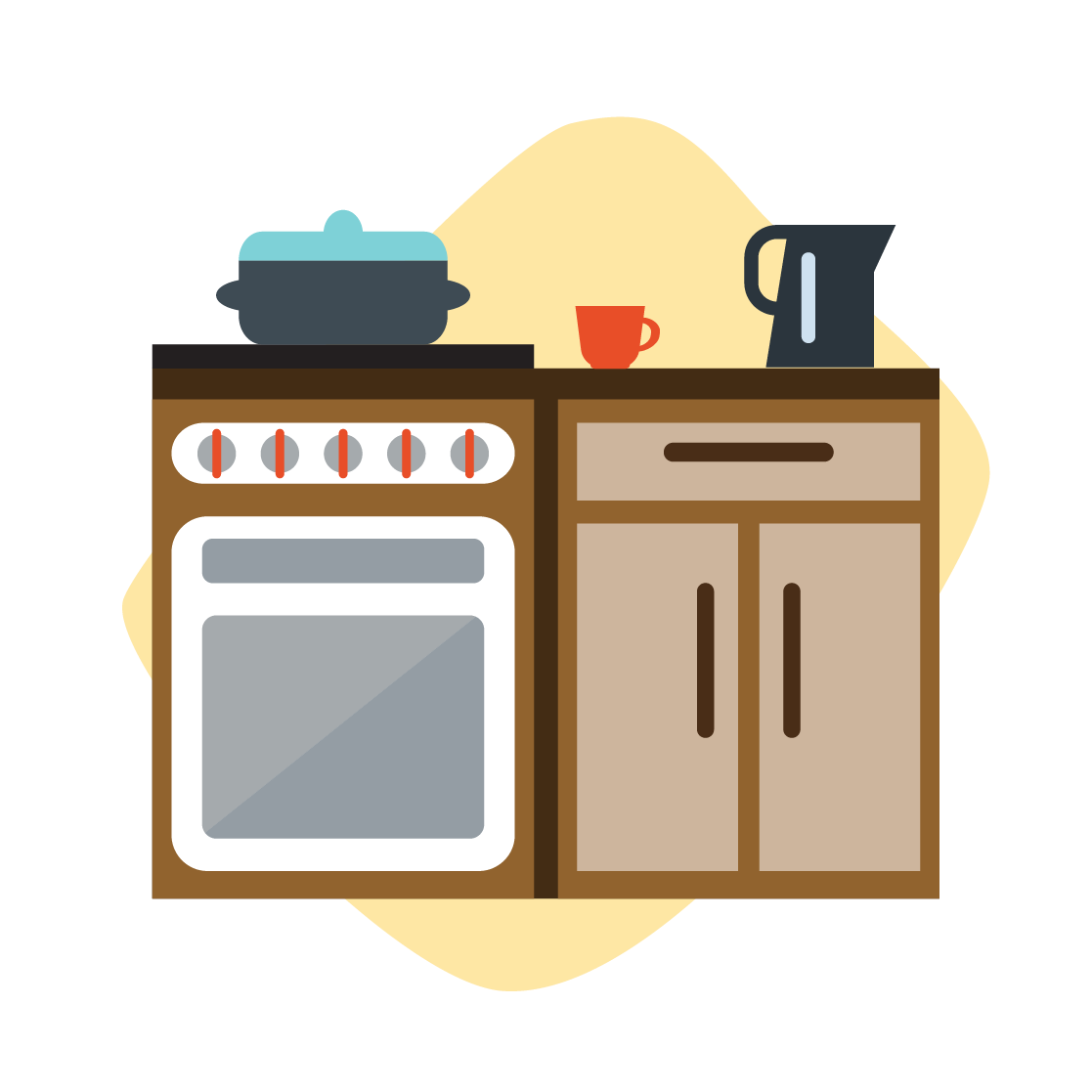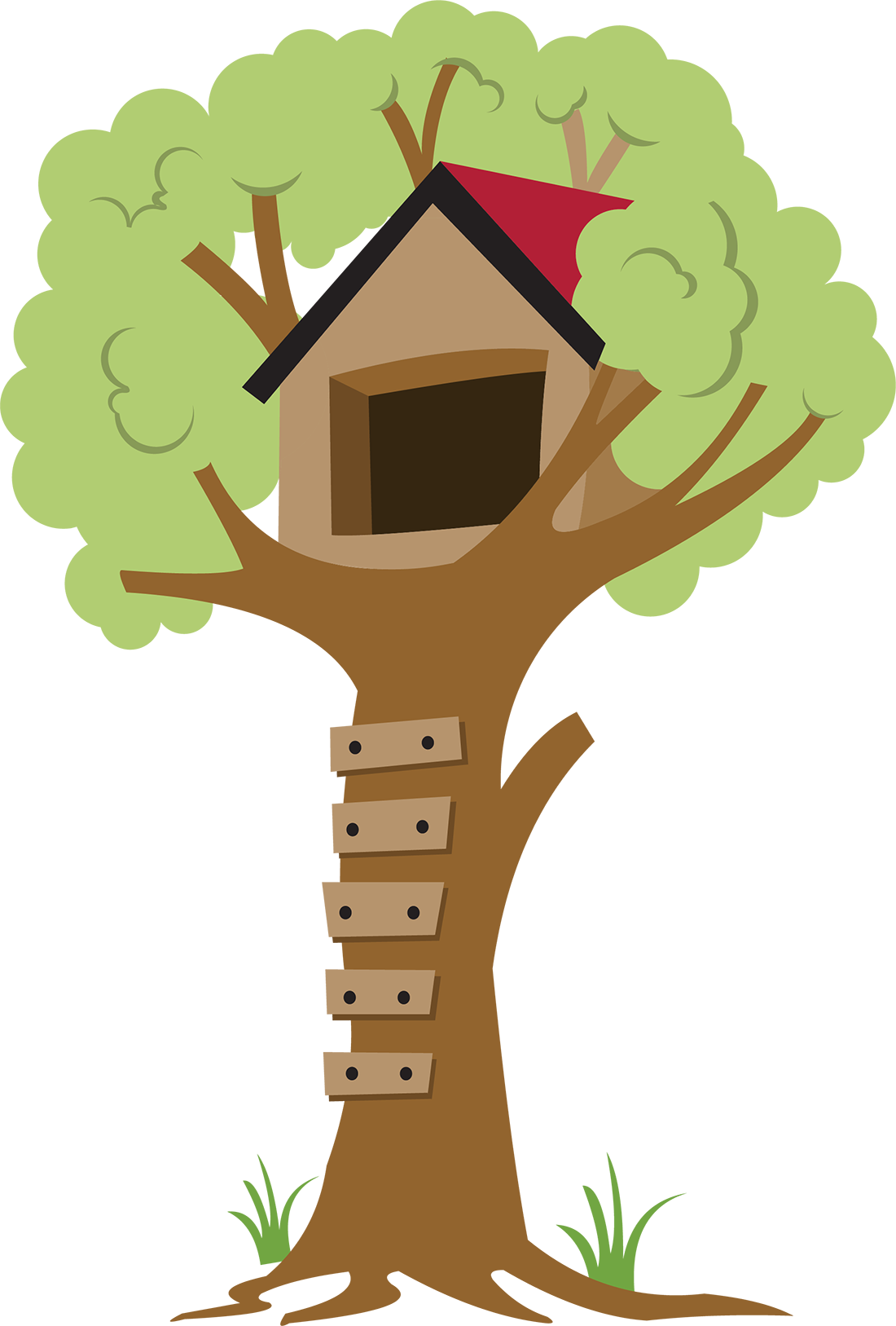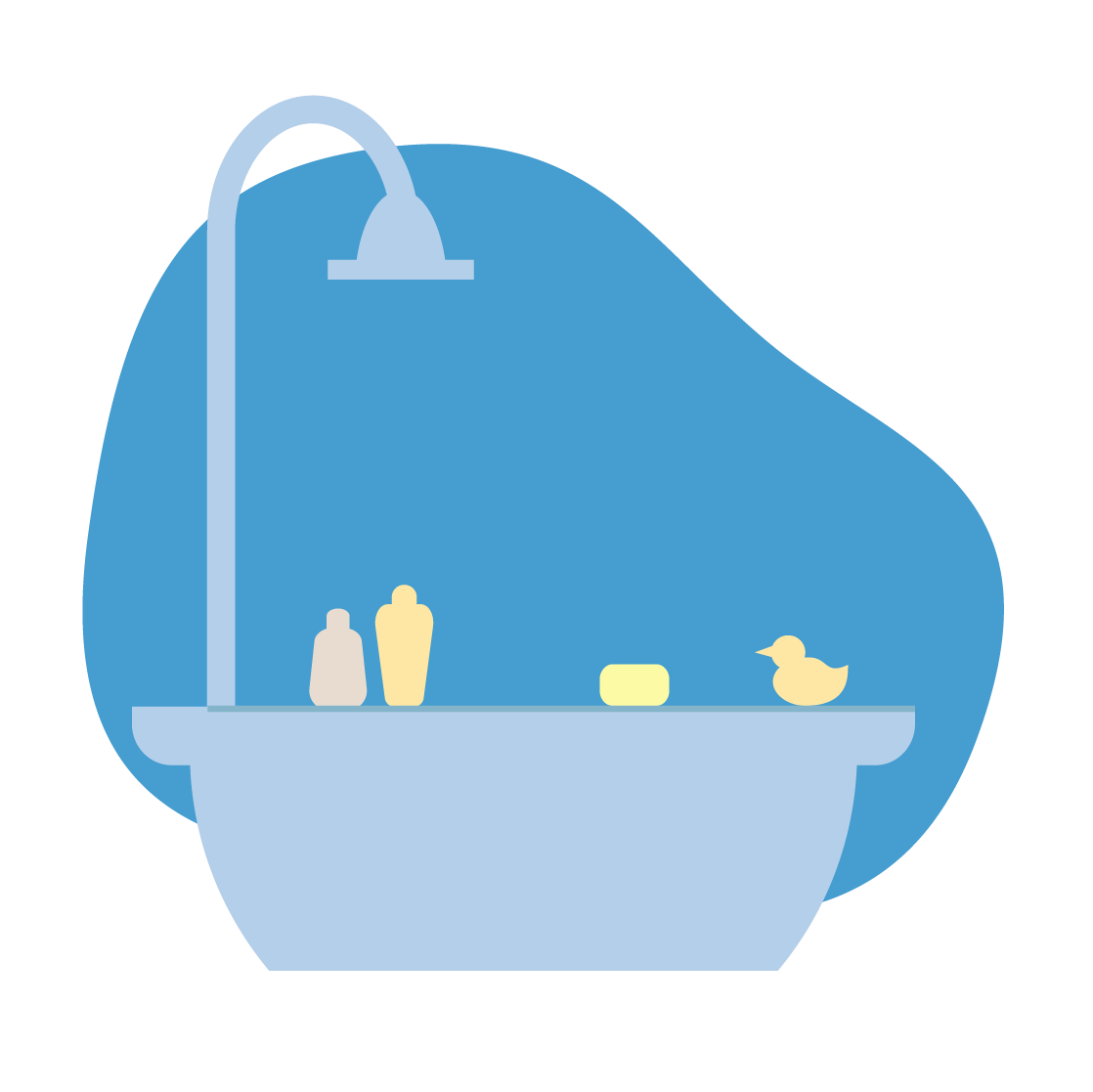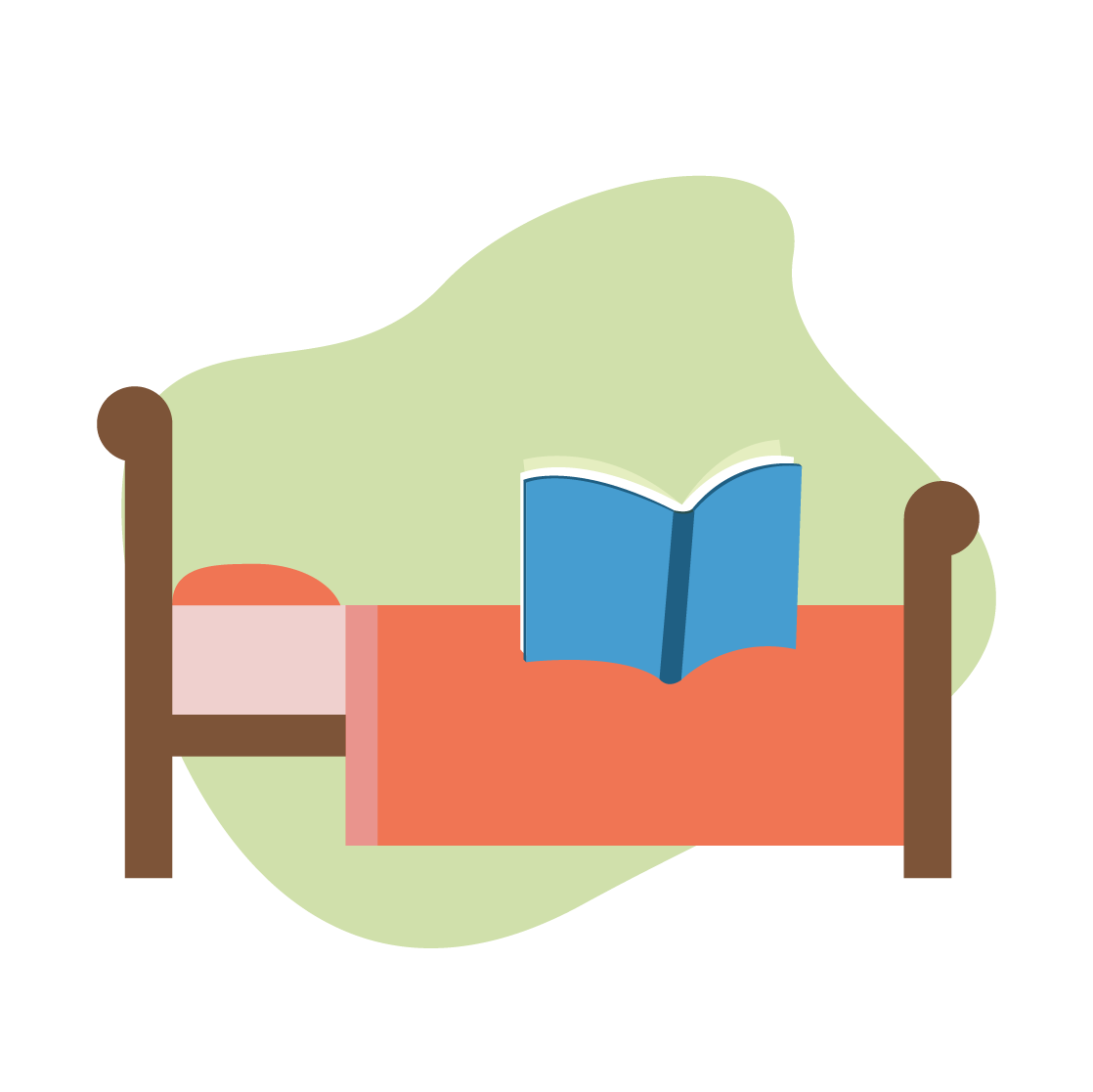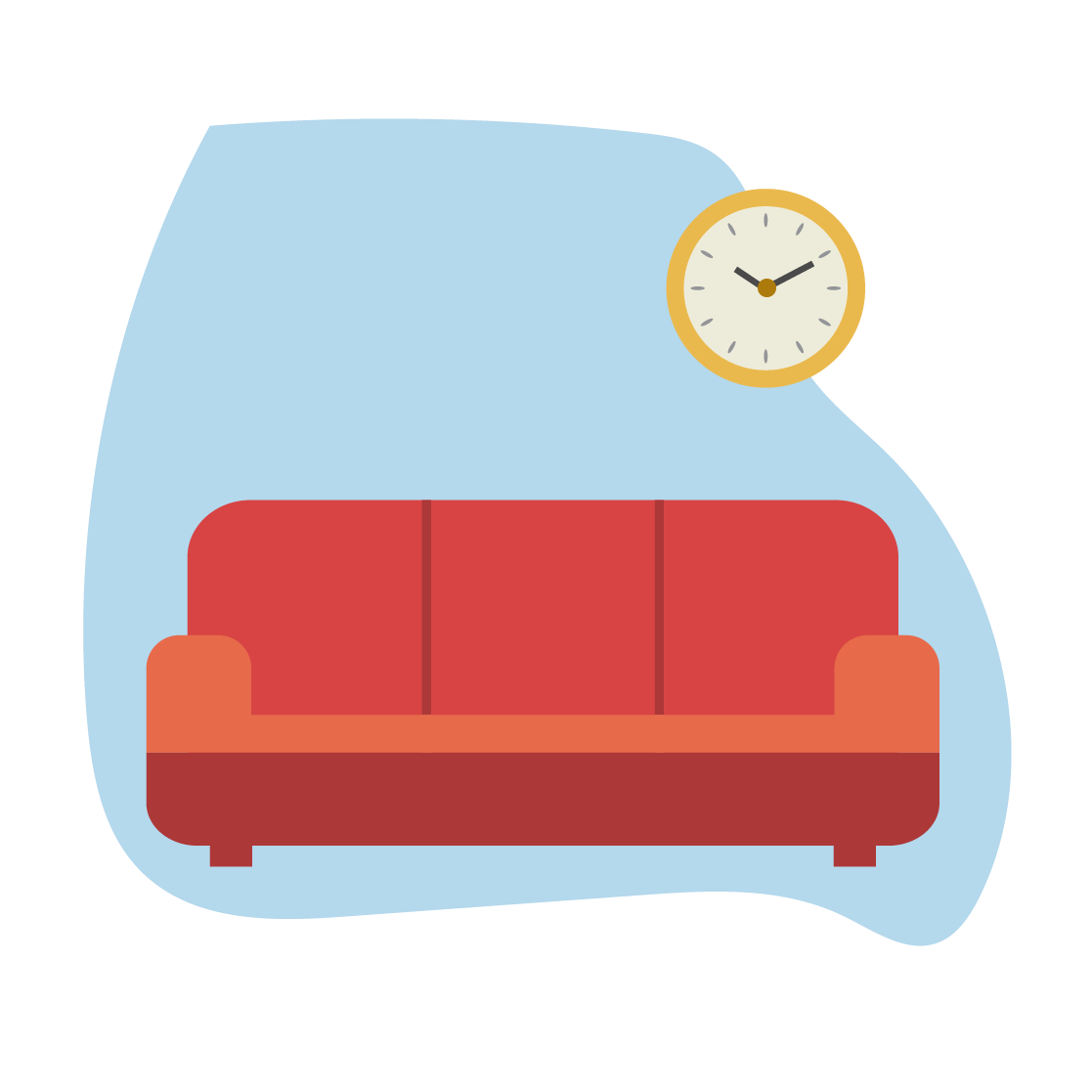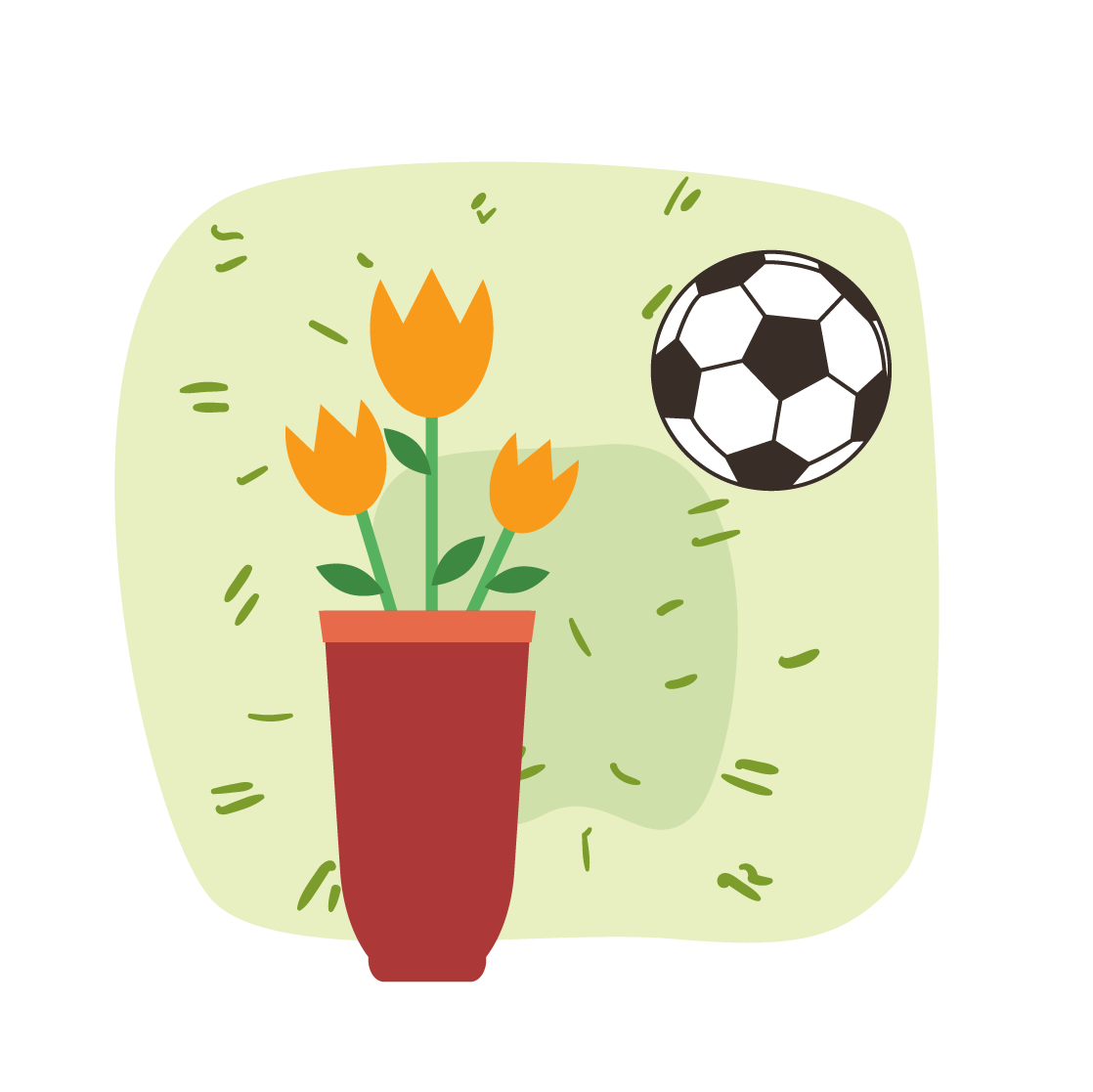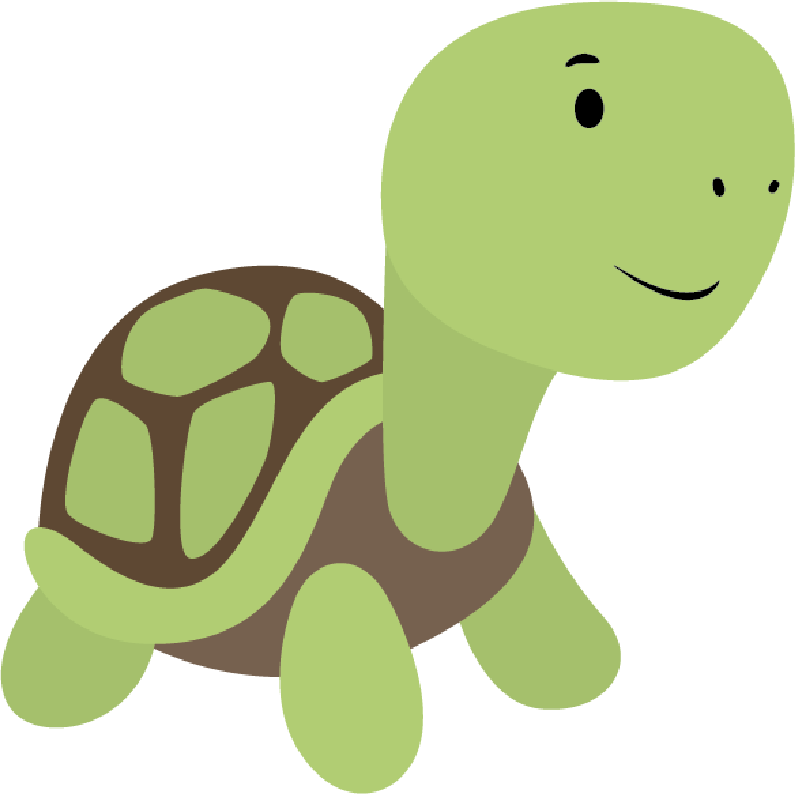Around the House Ideas
Welcome to our Learning Around the House section! Here we have put together some engaging activities that support and promote early childhood development. Our intention is to give you, the parents some tools and ideas to engage with your child at home, without the hassle of running to the store for supplies. These activities have also been created through the cultural lens that Makonsag values and we have made sure to keep our cultural programming at the forefront.
We have categorized activities to follow the following five criteria:
1.
Fine Motor2.
Gross Motor3.
Language4.
Well-Being5.
ConnectionsFocusing on the development of fine motor skills, these activities were developed with the goal of improving the function of smaller muscles groups through grasping, drawing and object manipulation.
The activities focus on the development of our learner’s gross motor skills by working on the movements of larger muscle groups and developing their coordination and confidence.
Language development starts early, and we would be remiss if it were not at the forefront of our minds while planning our activities around the home. These sections have activities that promote the development of language in young learners.
Self-care and confidence building are the focus of activities under this label. These games promote exercise and learning to look after your mental well being, both from a physical and emotional standpoint.
Activities in this category are developed with the goal of aiding in children making connections to the world that is around them. Connecting to parents, friends, nature, their culture are all promoted here.
We hope you enjoy the list of culturally relevant activities and enjoy the time playing, learning, and loving with your little one.
We hope you enjoy the list of culturally relevant activities and enjoy the time playing, learning, and loving with your little one.
Kitchen
Have your child in the kitchen with you while cooking at a safe distance and you can be talking about what you are making. This is a great time to let them know what you’re up to. Give them a few simple tasks to help along process along. Peeling, sorting, and handing over utensils is a great exercise and helps build vocabulary.
Learn the basic words of a traditional language that have to do with the kitchen, ex. Spoon, plate, pot, etc. Repetition is key with language learning!
| English | Algonquin | Inuktitut | Mohawk | Michif | North East Cree | Ojibwe |
|---|---|---|---|---|---|---|
| Spoon | Emkwan | ᐊᓘᑎ | Atókwa | en chouyayr | ᐋᒥᐦᐧᑳᓐ | Emikwaan |
| Plate | Wisini onagan | ᐊᓪᓕᕋᖅ | Akè:ra | l’asyet | ᐅᔮᑭᓐ | Desinaagan |
| Bowl | Nibobi onagan | ᐃᒥᕋᕈᑎ | Teióhses akè:ra | en bowl | ᑳᒨᑖᔮᒡ ᐅᔮᑭᓐ | Bozikinaagan |
| Cup | Minikwe anagan | ᐃᕐᖑᓯᖅ | Iehnekotsientáhkwa | en bol | ᒥᓂᐦᐧᑳᑭᓐ | Minikwe Onaagaans |
| Pot | Tcibakwan kik | ᐃᒐᔾᔪᑎ | Kanà:tsion | aen pot | ᐊᔅᒋᐦᒄ | Akik |
| Teapot | Nibishwabo kik | ᑏᓕᐅᕐᕕᒃ | Ieti’tsheraráhkwa | la tachayr | ᑏᐅᔅᒋᐦᒄ | Niibiishaabo akikoons |
| Colander | Agojogonan | ᐃᒪᐃᕈᑎ | Ienonwakenhstáhkwa | sheehkoopawtinikun | ᔒᔥᐧᑳᔮᒋᑭᐧᐃᐦᑖᑭᓐ | Zhaabwaazhigawichigan |
| Fork | Pidikigan | ᑲᐳᒃᑕᐅᑎ | Áhsihkwe | en fourshet | ᒌᔥᑎᐦᐄᑭᓐ | Badaka-jiigan |
| Tray | Midjin miyodowin onagan | ᐃᓗᓕᖃᕐᕕᒃ | Iekhwahráhkwa | aen groos asyet | ᐊᓲᑖᑭᓐ ᑳ ᓂᐱᑳᒡ | Desaag taasjigan |
| Spatula | Kwekiyebigan | ᔅᐹᑦᑐᓚ | Ie’nhonhsakarhahthóhtha | kwawpahikun | ᐧᑳᑎᐱᐦᐄᑭᓐ | Gagwekwebigan |
| Knife | Mokaman | ᓴᕕᒃ | À:share | aen koutoo | ᒨᐦᑯᒫᓐ | Mookomaan |
Translated by Wintranslation
Have your child help you with cooking traditional recipes as soon as they are capable. WE suggest this super fun Bannock and Berries recipe:Bannock
- 3 cups flour
- 3 tbsp baking powder
- 1/2 cup sugar
- 1 tsp salt
- Vegetable oil for frying
- 2 cups raspberries
- 1/2 cup white sugar
- 1/2 lemon. Juiced and rind
- 1 pinch salt
- Preheat vegetable oil in a deep-frying pan to 350 degrees Fahrenheit. (It’s also possible to bake or cook the bannock over an open flame).
- Mix flour, sugar, baking powder, and salt together in a medium-sized bowl.
- Add water and mix until dough becomes thick and sticky. Do not over mix or the dough will become tough.
- Roll the dough into a large ball and slice into 12 equal pieces.
- Flatten each ball of dough with your hands.
- Drop dough into the oil and fry until it is golden brown on both sides and soft but cooked inside.
- For the raspberry compote cook the berries in a saucepan over medium heat until soft.
- Add sugar, lemon juice, rind, and salt.
- Continue cooking until the sugar is dissolved.
- Serve bannock drizzled with compote.
Dig out a hole in an able and place it in a flat container. In the apple hole place some food colouring
and baking soda. Help you child pour some vinegar on the food colouring and baking soda. This is also an
awesome experiment to do in the snow!
Teach your child about reduce, reuse, recycle to help mother earth, ex. Sorting the recycling. Play a
game of “Which one doesn’t belong?” by placing something in the incorrect bin and giving your child
hints to place it in the right spot.
Practice pouring with different sizes of containers by setting up a bin or filling the sink with water
and letting the children play with different size cups or containers. Be sure to use plastic to avoid
any unwanted breaks.
Playing in the bubbles and getting some dishes done at the same time can be a great activity to work
those fine motor skills. Prepare a bin wish soap, water, plastic dishes, and a sponge. Get the little
ones to help wash some of the dishes and play in the bubbles.
Choose some kitchen tools you’ll need to make lunch and hide them around the room. Go on a search with your little one to find the missing utensils. Teach the language for each tool as we find the tools scattered around.
| English | Algonquin | Inuktitut | Mohawk | Michif | North East Cree | Ojibwe |
|---|---|---|---|---|---|---|
| Spoon | Emkwan | ᐊᓘᑎ | Atókwa | en chouyayr | ᐋᒥᐦᐧᑳᓐ | Emikwaan |
| Plate | Wisini onagan | ᐊᓪᓕᕋᖅ | Akè:ra | l’asyet | ᐅᔮᑭᓐ | Desinaagan |
| Bowl | Nibobi onagan | ᐃᒥᕋᕈᑎ | Teióhses akè:ra | en bowl | ᑳᒨᑖᔮᒡ ᐅᔮᑭᓐ | Bozikinaagan |
| Cup | Minikwe anagan | ᐃᕐᖑᓯᖅ | Iehnekotsientáhkwa | en bol | ᒥᓂᐦᐧᑳᑭᓐ | Minikwe Onaagaans |
| Pot | Tcibakwan kik | ᐃᒐᔾᔪᑎ | Kanà:tsion | aen pot | ᐊᔅᒋᐦᒄ | Akik |
| Teapot | Nibishwabo kik | ᑏᓕᐅᕐᕕᒃ | Ieti’tsheraráhkwa | la tachayr | ᑏᐅᔅᒋᐦᒄ | Niibiishaabo akikoons |
| Colander | Agojogonan | ᐃᒪᐃᕈᑎ | Ienonwakenhstáhkwa | sheehkoopawtinikun | ᔒᔥᐧᑳᔮᒋᑭᐧᐃᐦᑖᑭᓐ | Zhaabwaazhigawichigan |
| Fork | Pidikigan | ᑲᐳᒃᑕᐅᑎ | Áhsihkwe | en fourshet | ᒌᔥᑎᐦᐄᑭᓐ | Badaka-jiigan |
| Tray | Midjin miyodowin onagan | ᐃᓗᓕᖃᕐᕕᒃ | Iekhwahráhkwa | aen groos asyet | ᐊᓲᑖᑭᓐ ᑳ ᓂᐱᑳᒡ | Desaag taasjigan |
| Spatula | Kwekiyebigan | ᔅᐹᑦᑐᓚ | Ie’nhonhsakarhahthóhtha | kwawpahikun | ᐧᑳᑎᐱᐦᐄᑭᓐ | Gagwekwebigan |
| Knife | Mokaman | ᓴᕕᒃ | À:share | aen koutoo | ᒨᐦᑯᒫᓐ | Mookomaan |
Translated by Wintranslation
Fill a bucket with some water, soap, and dump some of the little one’s toys in the soapy bucket. Give them a sponge and have them give the toys a fun bath.
Find a plastic container and fill it with a few toys. Cover the toys in water and then leave it in the freezer for a few hours. Place some animal toys inside and create an animal rescue story! Little ones will have fun smashing the ice and rescuing their toys.
Bathroom
Have your little one start in the bathroom and show them one thing that
is wet
and one thing that is dry. Allow them to move around the house and point out things that are
wet and
dry.
Go over some bathroom routines in an indigenous language (ie. Toileting,
washing hands, brushing teeth, brushing hair)
| English | Algonquin | Inuktitut | Mohawk | Michif | North East Cree | Ojibwe |
|---|---|---|---|---|---|---|
| Toileting | Miziyogwamik | ᐊᓇᕐᕕᔨᕆᓂᖅ | Iakennistiakè:ne | la klawzet kee-awpachistaw | ᒦᓰᐅᑭᒥᒄ | Miiziiwigamig ngii zhaa |
| Washing hands | Kizinjin | ᐅᐊᓴᕐᓂᖅ ᐊᒡᒐᐃᖅ | Ionhtsióhares | kisheepaykishchihchay | ᒋᔥᑖᐹᐅᑎᐦᒑᐦ | Giziibiigininjiing |
| Brushing teeth | Kiziyabidiyon | ᐅᐊᓴᕐᓂᖅ ᑭᒍᓰᑦ | Brushing teeth – Iontenawiróhares | en brosh lee dawn | ᐅᔑᐦᑖᐦ ᒌᐱᑦᐦ | Gizii’aabdewi |
| Brushing hair | Pinakweyo | ᐃᓪᓚᐃᕐᓂᖅ | Iontko’tsión:nis | en brosh lee zhveu | ᔒᑰᐦ | Nisikwege |
| Sink | Kizinjiyonagin | ᐅᐊᓴᕐᕕᒃ | Tsi iontkonhsohare’táhkwa | li sink | ᐋᐦ ᒋᔥᑖᐹᐧᐃᔨᓈᓂᐧᐃᒡ | Giziibiig naagan |
| Towel | Kizigwan | ᐊᓪᓚᕈᑎ | Iontia’tokewáhtha | aen niseumaen | ᑳᓰᐦᐧᑳᐦᐅᓐ | Giziingwegan |
| Toothbrush | Kiziyabidiyan | ᑭᒍᓯᓯᐅᑎ | Iontenawirohare’táhkwa | en brosh chikisheepaykinamihk lee dawn | ᒦᐱᑦᐦ ᐋᐦ ᓯᓂᐦᑯᐦᐄᑭᓂᐧᐃᒡᐦ | Giziiyaabidegan |
| Toothpaste | Kiziyabide kizibigan | ᑭᒍᓯᓯᐅᑎ ᐃᕐᒥᐅᑦ | Iontenawirohare’táhkwa ohsè:rha | li toothpaste | ᒦᐱᑦ ᓱᑉ | Giziiyaabide bimide |
| Face Cloth | Kizigwanesh | ᑮᓇᒧᑦ ᐊᓪᓚᕈᑎ | Iontkonhsokewáhtha | kawshihkwayhikun | ᑳᔒᐦᐧᑳᐦᐅᓂᔥ | Giziingwegaans |
| Shower | Ka ija kizisibindizin | ᐅᕕᓂᓐᓂᐊᕐᓂᖅ | Iontia’tohare’táhkwa | aen ptsi tarazh | ᐋᐦ ᒋᔥᑖᐹᐧᐃᔨᓈᓂᐧᐃᒡ | Giziibiigizhen |
Translated by Wintranslation
Super Simple Songs has a great selection of children’s songs for every
occasion.
Blowing bubbles (great way to practice relaxation and deep breathing) in
the bath
is super fun!
Make little ice cubes with small gift inside and watch them melt in the
bathtub!
Folding towels and face clothes (what are the different shapes you can
make,
example making a bunny out of a face cloth)
Fill a few paper cups with water and place some pennies in the bath. Have
the little ones pretend they are searching for treasure in the bath and place the missing
treasure (pennies) in the paper cup.
Bath time can be even more fun by bringing in some Lego pieces and
building all sorts of towers in the tub. Try and build a whole city!
This can be done with Shaving cream instead of Cool Whip. Fill the slots
in a muffin tin with shaving cream or cool whip and mix in your different food colouring.
Little ones can use the concoction to paint while they’re in the tub and change the water
colour also!
| English | Algonquin | Inuktitut | Mohawk | Michif | North East Cree | Ojibwe |
|---|---|---|---|---|---|---|
| Red | Miskwa | ᐊᐅᐸᖅᑐᖅ | Onekwénhtara | roozh | ᒥᐦᐧᑳᐤ | Miskwa |
| Blue | Miccokona | ᑐᖑᔪᖅᑕᖅ | Oròn:ia | bleu | ᐱᒋᔅᑭᓈᐤ | Oshaawaashkwaa |
| Green | Ojowshkwa | ᐆᔭᐅᔭᖅ | Óhonte | vayr | ᐅᓵᐧᐋᐤ | Anibiishaande |
| Yellow | Ozawa | ᖁᖅᓱᖅᑕᖅ | Otsì:nekwar | zhounn | ᐅᔖᐧᐋᔑᐤ | Ozaawaa |
| Purple | Mikide miccokona | ᑐᖑᔪᐊᖓᔪᖅ | Oharennáhta | vyalet nwaenr | ᐅᑐᒋᒥᐦᐧᑳᐤ | Miininaande |
| Orange | Misko ozawa | ᐊᐅᐸᔮᖓᔪᖅ | Katsi’nekwarhòn:tsi | aen oraanzh | ᔑᑯᑖᐅᓈᑯᓐ | Miskozaawaa |
| Pink | Miskwa waba | ᑲᔪᖅ | Oharennáhta | la kooleur di rooz | ᐧᐄᐦ ᒥᐦᐧᑳᔑᐤ | Oginiiwaande |
| Brown | Mikide ozawa | ᕿᒃᓂᖅᑕᖅ | Kanekwenhtararà:ken | shakwalaw | ᒋᔥᑖᒫᐅᓈᑯᓐ | Makadewizaawaa (Ozaawaa) |
| Black | Mikidewa | ᓯᐊᕐᓇᖅ | Ohéhsa | nwayr | ᐧᐃᔨᐹᐤ | Makadewaa |
| Grey | Wabate | ᖃᑯᖅᑕᖅ | Kahòn:tsi | gree | ᐧᐋᐱᑖᐤ | Waabaa |
| White | Waba | ᐊᐅᐸᖅᑐᖅ | Ata’kèn:ra | blawn | ᐧᐋᐹᐤ | Waabshkaa |
Translated by Wintranslation
This a great game for fun letter recognition. Bring some coffee filters
and tape up to the bathroom. First, wet some bath letters and stick them to the wall. Then
flatten out a coffee filter and taped it over the letter. It should obscure the letter
enough that you can’t tell which one is underneath. Put the little one into the empty/dry
bathtub with his squirt bottle and tell them to spray the targets and reveal each letter.
Bedroom
Show the cover of any indigenous story book and brainstorm questions you have about the book using sentence stems such as:
- “I wonder who/what/why…”
- “I think…”
Making Animal shadow puppets to learn the animal names in an indigenous language is a fun way to practice. Dressing up and oral storytelling with wooden spoon puppets, shadow puppets or storytelling baskets are all excellent ways to keep a story interesting.
This is the best way to start the day. Help the little one make their own bed after getting up and start the day of well.
Tower building and Tower destroying are tow favorite activities for little ones. Bring some blocks or Lego into the bedroom and let them build them up high and knock them down!
A fun twist on building a fort in the bedroom can be to pretend it is an animal den and bring in their stuffed animals. Use the bedsheets, pillows, blankets, and furniture to construct your animal den.
| English | Algonquin | Inuktitut | Mohawk | Michif | North East Cree | Ojibwe |
|---|---|---|---|---|---|---|
| Bear | Moko | ᐊᒃᖤ | Ohkwá:ri | aen noor | ᒋᔖᔮᒄ | Makwa |
| Wolf | Mowagan | ᐊᒪᕈᖅ | Okwáho | aen loo | ᒦᐦᐄᐦᑭᓐ | Ma-iingan |
| Fox | Wagosh | ᑎᕆᒐᓂᐊᖅ | Tsítsho | aen rnawr | ᒥᐦᒑᔑᐤ | Waagosh |
| Rabbit | Wabos | ᐅᑲᓕᖅ | Kwa’ien:’a | li lyayv | ᐧᐋᐳᔥ | Waabooz |
| Bat | Obakwanajic | ᐅᓐᓄᐊᖅᓯᐅᑎ ᐃᓇᓗᑲᖅ | Tsikera’wístak | aen puhkwunawcheesh | ᐱᐦᐧᑳᒌᔥ | Apashkwanaajiinh |
| Lynx | Bijew | ᐱᖅᑐᖅᓯᖃᖅ | Takoskó:wa | aen pishoo | ᐱᔑᐤ | Bizhiw |
| Lion | Mishi bijew | ᓚᐃᔭᓐ | Kén:reks | aen lyoon | ᒥᔑᐱᔑᐤ | Mishibizhii |
| Skunk | Shigak | ᔅᑲᖕᒃ | Aní:tas | aen shikawk | ᔑᑳᒄ | Zhigaag |
| Otter | Nigik | ᐸᒥᐅᑑᖅ | Tawí:ne | en sort di foutroo | ᓂᒋᒄ | Nigig |
Translated by Wintranslation
Place some seeds in a Ziploc with a wet paper towel and tape the bag to the bedroom window (or any window). Check back everyday and talk about how the seeds have changed over time.
Start the day with some exercises after making the bed. Bedroom yoga can be a great way to exercise and get energized before your morning routine. Some suggestions for animal Yoga are:
- Pretend to be a dog – Practice the downward-facing dog pose.
- Pretend to be a tree – practice the tree pose.
- Pretend to be a giraffe – practise the extended mountain pose.
- Pretend to be an elephant – practice wide-legged standing forward bend.
- Pretend to be a butterfly – practice the cobbler’s pose.
| English | Algonquin | Inuktitut | Mohawk | Michif | North East Cree | Ojibwe |
|---|---|---|---|---|---|---|
| Pretend to be a dog | Animosho kazin | ᕿᒻᒥᙳᖅ ᐅᑯᖓᔪᖅ | Satatón:ni ne è:rhar | awhkisanawn kiya aen shyaen | ᐊᑎᒻ ᓂᔅᐱᑎᐤ᙮ | Nimokaajiinkaaza |
| Pretend to be a tree | Mitik kazin | ᓇᐹᖅᑐᙳᐊᖅ | Satatón:ni ne kérhite | awhkisanawn kiya aen awbr | ᒥᔥᑎᒄ ᓂᔅᐱᑎᐤ᙮ | Mitigkaaza |
| Pretend to be a giraffe | Gigenakigwe kazin | ᔪᕌᕝᖑᐊᖅ | Satatón:ni ne kahniaseskó:wa | awhkisanawn kiya aen giraffe | ᑳᒋᐧᓈᑯᔨᐧᐋᑦ ᓂᔅᐱᑎᐤ᙮ | Ginwaabiigiwewekaaza |
| Pretend to be an elephant | Shibwadjigeshi kazin | ᐃᓚᕙᑦᖑᐊᖅ | Satatón:ni ne onotsta’kó:wa | awhkisanawn kiya aen elefawn | ᑳᐅᐦᐹᐦᒃ ᐧᐋᔅᑳᐦᐄᑭᓂᔨᐤ ᓂᔅᐱᑎᐤ᙮ | Jejiibidakiikaaza |
| Pretend to be a butterfly– practice the cobbler’s pose. | Memegwashi kazin | ᑕᕐᕋᓕᑭᑖᖑᐊᖅ | Satatón:ni ne tsikenón:nawen | awhkisanawn kiya aen memaengwaen | ᐧᑳᐦᐧᑳᐱᓯᐤ ᓂᔅᐱᑎᐤ᙮ | Memengwaanskaaza |
| Pretend to be an eagle | Migizi kazin | ᓇᒃᑐᕋᓕᖑᐊᖅ | Satatón:ni ne á:kweks | awhkisanawn kiya l’aegl | ᒥᒋᓲ ᓂᔅᐱᑎᐤ᙮ | Migizikaazo |
| Pretend to be a flower | Wabigoni kazin | ᐱᕈᖅᓯᐊᖑᐊᖅ | Satatón:ni ne otsì:tsia | awhkisanawn kiya en floer | ᓃᐱᔑᐦᒡ ᐄᓯᓈᑯᐦᐄᓱᐦ᙮ | Waawaaskonekaaza |
| Pretend to be a mountain | Pikodina kazin | ᑭᙵᖑᐊᖅ | Satatón:ni ne ionontáhere | awhkisanawn kiya en mootawyn | ᐧᐃᒌᐦᒡ ᐄᓯᓈᑯᐦᐄᓱᐦ᙮ | Shpaabkaagkaaza |
| Pretend to be a tree | Mitik kazin | ᓇᐹᖅᑐᖑᐊᖅ | Satatón:ni ne kérhite | awhkisanawn kiya aen awbr | ᒥᔥᑎᑯᐦᒡ ᐄᓯᓈᑯᐦᐄᓱᐦ᙮ | Mitigkaaza |
| Pretend to be a seed to the ground | Kitigan kazin | ᓇᐹᖅᑐᖅᓴᔭᖑᐊᖅ | Satatón:ni ne ká:nen | awhkisanawn kiya la grenn | ᓰᒥᓐ ᐄᓯᓈᑯᐦᐄᓱᐦ᙮ | Miinkaankaaza |
Translated by Wintranslation
Have a dance competition while place your feet in a pillowcase. Jump around wiggle and enjoy the music with your little one. Choose who is the ultimate pillowcase dance master at the end.
Folding towels and face clothes (what are the different shapes you can make, example making a bunny out of a face cloth)
Stand with your child in the mirror and practice repeating positive messages of strength and love to start the day in a good way. Messages like “I am loved”, “I am strong”, “I can do anything I put my mind to”, “I am a leader”, etc..
| English | Algonquin | Inuktitut | Mohawk | Michif | North East Cree | Ojibwe |
|---|---|---|---|---|---|---|
| “I am loved.” | “Ni sagigo.” | “ᓇᒡᓕᒋᔭᐅᔪᖓ.” | “Ionkenorónhkwa” | ” Niya nishawkihikaywin.” | “ᓂᓵᒋᐦᐄᑭᐧᐃᓐ᙮” | “Nzaagigwo.” |
| “I am strong.” | “Ni miskwezi.” | “ᓴᙱᔪᖓ.” | “Ke’shátste” | ” Niya nimashkuweeshawn.” | “ᓂᒥᔅᑭᐧᐃᓰᓐ᙮” | “Nimishkowizii.” |
| “I can do anything I put my mind to.” | “Nigishton kidja todiman ishpin gweshtowan.” | “ᓱᓕᕆᔪᓐᓇᖅᑐᖓ ᓱᓇᑐᐃᓐᓇᓂᒃ ᐃᓱᒪᒋᔭᓐᓂᒃ.” | “Kkwénies othé:nen nénkiere nahò:ten nakate’nikonhraié:rate” | ” Niya pikou kaykwuy geeitoutayn kaw-itayihtamawn.” | “ᒥᒄ ᐊᓐ ᒑᐧᑳᓐ ᓂᑭ ᒌᐦ ᐃᐦᑐᑖᓐ᙮” | “Manjigwa iidik nda gashkitoon giishpin mashkowendamaa.” |
| “I am a leader.” | “Ni nigani.” | “ᐊᐅᓚᑦᑎᔨᐅᔪᖓ.” | “Khenenhrì:ne’s” | ” Niya nineekwanawn.” | “ᓂᑭ ᒌᐦ ᓃᑳᓂᔥᑳᒑᓐ᙮” | “Ndo niigaanii.” |
| “I am beautiful.” | “Ni minishanin.” | “ᐃᓂᖁᓇᖅᑐᖓ.” | “Wakatáhskats” | ” Niya nikatawashishin.” | “ᓂᒥᔪᔑᔑᓐ᙮” | “Ndo gwanaajiw.” |
| “I am smart.” | “Ni kitawendim.” | “ᖃᐅᔨᒪᑦᓯᐊᖅᑐᖓ.” | “Wake’nikonhrowá:nen” | “Niya aen smart.” | “ᓂᑭᒑᐦᑖᐧᐋᔨᐦᑖᓐ᙮” | “Ndo gikendaas.” |
| “I am confident.” | “Ni sogadeh.” | “ᐱᔪᒪᓂᖃᑦᓯᐊᖅᑐᖓ.” | “Wake’nikonhratshá:ni” | “Niya nikischeetaymishoon.” | “ᓂᑖᐧᐹᐅᒑᔨᒦᓱᓐ ᒑ ᒌᐦ ᐃᐦᑐᑎᒫᓐ᙮” | “Ndo debwewendam.” |
| “I am going to have a good day.” | “Kida mino kijigan nin odja.” | “ᐅᓪᓗᖃᑦᓯᐊᕐᓂᐊᖅᑐᖓ.” | “Katenhniseriiohstà:ne” | ” Niya niayawn aen miyou-awshik li zhournee.” | ᓂᑭ ᒥᐧᔮᔨᐦᑖᓐ ᐆ ᑳᔑᑳᒡ᙮ | “Mina giizhigad anii yaan.” |
| “I am doing my best every day.” | “Niga gweshton etdsam kijigik.” | “ᐱᐅᓂᖅᐹᒥᒃ ᑲᒪᒐᓱᐊᓲᖑᔪᖓ ᐅᓪᓗᑕᒫᑦ.” | “Nia’tewenhniserá:ke tsi ní:kon kkwénies tsi kahskwísrons” | ” Niya geeitoutamawn pleu miyeur tou lee zhour.” | “ᐋᔑᑯᒥᒌᔑᑳᐤᐦ ᓲᐦᒃ ᓂᑯᒋᔥᑖᓐ᙮” | “Ndo zhichige memaanji nda gashkitowaan ensa giizhigag.” |
| “I deserve a great day.” | “Nida minagon eh mino kijigik.” | “ᐅᓪᓗᖃᑦᑎᐊᖃᕆᐊᖃᖅᑐᖓ.” | “Wa’tkatèn:tsha akatenhniserí:iohste” | ” Niya nikashkistamawshoon aen ayawyawn li miyeur aen zhournee.” | “ᓂᑭ ᒥᔪᐱᔨᓐ ᐆ ᒑ ᒌᔑᑳᒡ᙮” | “Ngii wiikijitaadizan gechi nishing giizhigad.” |
Translated by Wintranslation
Family Room
Pull out some of their bedroom toys and sort them according to different criteria, this is great for cognitive development. Some suggestions are sorting by colour, by size, by type.
Place some seeds in a Ziploc with a wet paper towel and tape the bag to the bedroom window (or any window). Check back everyday and talk about how the seeds have changed over time.
TPR (total physical response) is an excellent way to get kids learning and reciting their favorite stories. Try and act out a few of their favorites by pretending to be in a play. It is a great idea to let the kids go off script and use their imagination.
The String game involves creating various string figures, either individually or by passing a loop of string back and forth between two or more players.
This is a traditional game played with a ring, a stick, and a string. Traditionally indigenous parents would use whatever they had around to craft this for their children. The game helps develop hand eye coordination by getting children to swing the ring onto the stick.
This is a super fun and engaging activity for children. Take out any old sheets or blankets and hang them over some furniture to make an awesome fun fort. Read stories, decorate with lights or stuffed animals, and hang out in the fort!
Teaching baby sign language can really help the little ones communicate early. Here are some helpful examples to get you started:
More – close fingers and thumbs together on both hands and tap together
All done – turn palms at the wrists in and then out with arms open
Play– the “y” hands are shaken back and forth at the wrists, like a tambourine.
Thank you – touch fingers to chin and bring hand toward the person being thanked
Please – the open hand touches the chest and moves in a circular motion.
Lay out some family photos on the floor and name the family member. Ask the little one to find a certain picture and bring it to you.
Hold a pillowcase stretched out with you on one side and the little one on the other. Place a ball in the middle and shake the pillowcase. See how long you can keep the ball in the pillowcase.
This is a fun play on hide and seek. Hide a few glowsticks around the room and switch off the lights. Have the little one search for the glowsticks and bring them back to you.
Backyard or Local Park
Go for an exploratory walk outside and collect a few rocks to bring home for the task. After picking the best ones you can find gather paints and make any animals, people, or objects you can think of. Once little one is finished use them to tell a fun story with the awesome rocks they’ve painted.
Cut the top off an orange and scoop out the inside, eat it as a snack or mix up some orange juice! Fill the peel with bird feed and hang it from a string in a tree close to a window. Make sure to watch for any birds and have a chat about what birds you get to see.
How to: Start in a squatting position and face each other in a circle or just face to face. The dance involves kicking one leg out while balancing with the other, alternate legs back and forth. The game ends when the last person is standing up.
This is such a fun activity to do! Go on a nature hike through a forest or around the neighborhood and collect leaves, sticks, stones, and any other materials. Use them to create works of art by arranging them in the snow or on the ground. Great fun while being outside.
Children take in a big breath of air, start running, and at the same time scream out loud. When they can no longer scream without taking a new breath, the spot where the scream stops is marked by their marking stick.
Place sticks in a line in the ground (or in a cone on the floor). Sticks should be placed 1 metre apart but can be adjusted depending on the age of the participants. (Traditionally the sticks are spaced 6 feet (about 2 m) apart.) The children can stand behind a starting line, facing the first stick. Give the player 3 bean bags or rocks, and they must behind a starting line on the opposite side of the playing area. Parent that child take turns trying to knock down each numbered stick with a bean bag or rock. Both parent and child attempts 3 throws.
Play lively music and invite children to dance barefoot, with shoes, with rain boots, with winter boots.
Purchase a few decorative gourds or squashes. Let children dip them in poster paint and roll them on a large sheet of white paper. Help them notice how each type of squash leaves a different type of print on the paper.
This is a great and versatile activity that kids love doing. Identify a few recyclables and show the kids. Have the kids search for them and go over the different words for the items in the back yard and sort them once the bring them back.
Blindfold your little on or have the shut their eyes and lead him through the forest to any tree that attracts you. (How far will depend on the little one’s age and ability to orientate himself. Help the “blind” child to explore his tree and to feel its uniqueness. I find that specific suggestions are best. For example, if you tell children to “Feel the tree,” they won’t respond with as much interest as if you say, “Rub your cheek on the bark.” Instead of, “Explore your tree,” be specific: “Is this tree alive? … Can you put your arms around it? … Is the tree older than you are? … Can you find plants growing on it? … Animal signs?”

